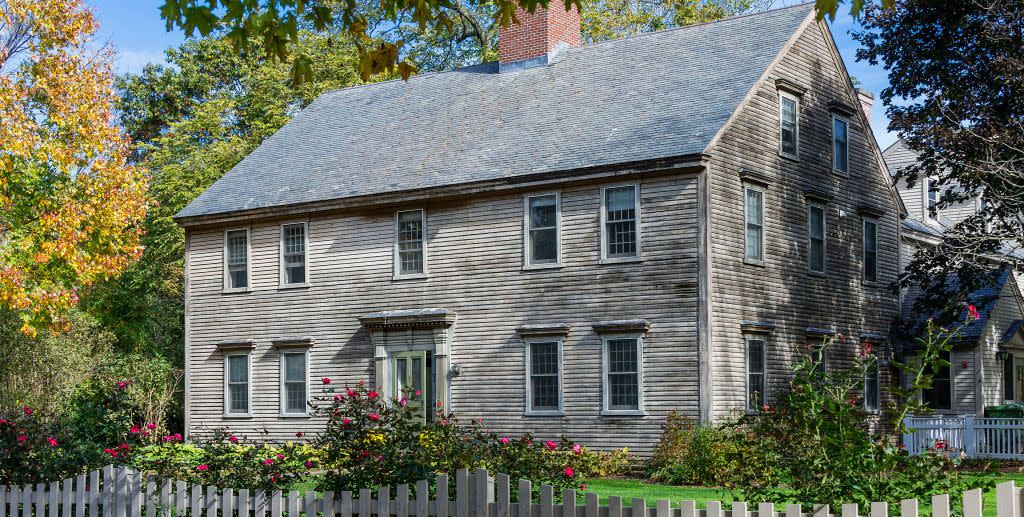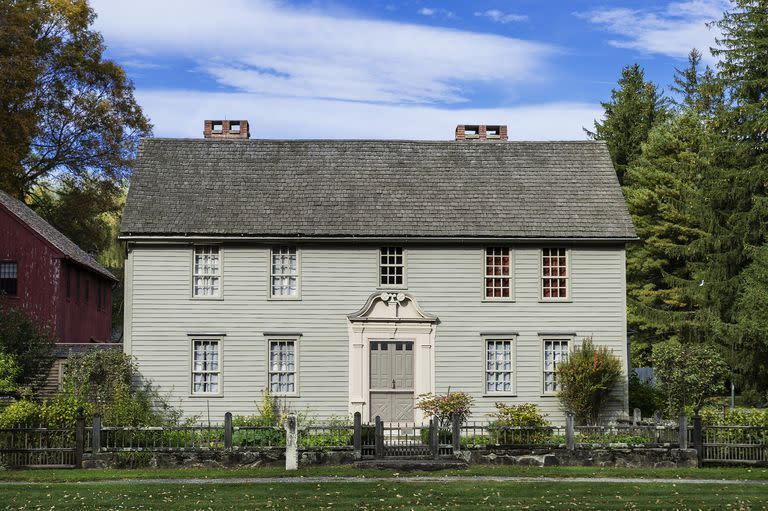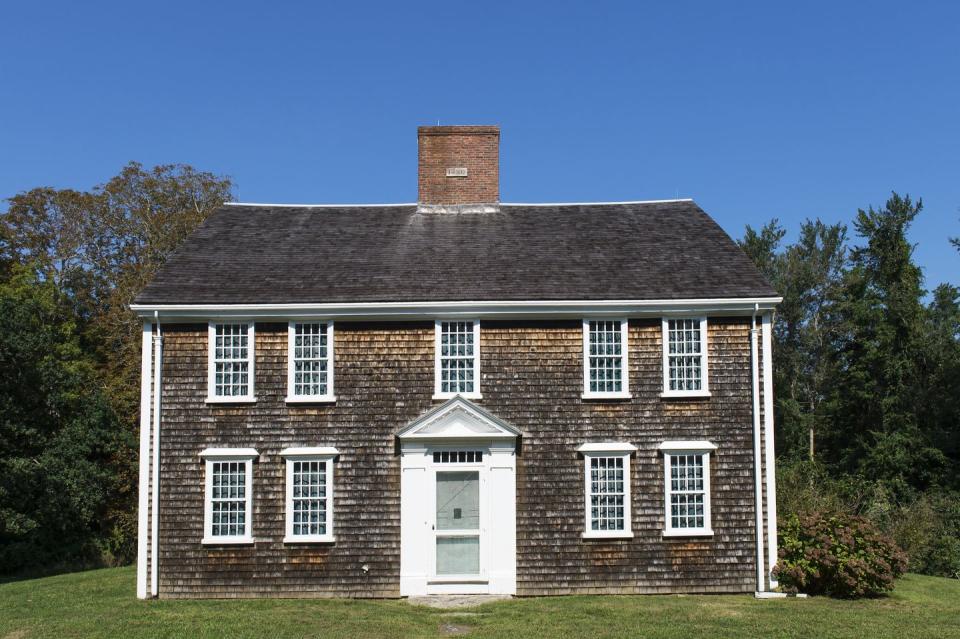A Complete Guide to American Colonial-Style Houses

With American Colonial style architecture, it's crucial to understand how colonialism shaped design globally—including what the architecture stands for and is rooted in throughout various parts of the world.
American Colonial architecture has a pretty self-explanatory origin story: We can trace its emergence as a common house style in the American colonies during colonial rule (the 1600s to mid-1700s). Throughout the United States, there are examples of Spanish, French, Dutch, and British Colonial architecture, since there were settlers from all of those countries inhabiting parts of what is now the U.S. for varying amounts of time.
However, when you hear American Colonial architecture, you can assume it means British Colonial architecture in America. That’s because (1) America was under British colonial rule for the longest time and in the largest area, and (2) British Colonial as a type of architecture “is much less defined than it sounds given the vastness of the British Empire and the highly varied responses its colonial architecture took within each colony,” according to Andrew Cogar, architect and president of Historical Concepts, an Atlanta- and New York-based architecture firm that specializes in traditional-yet-modern residences that are inspired by historical precedent.

Before going any further, it’s important to point out that architectural styles are not hard-and-fast rules. Two houses built “in the same architectural style, while they may share many similar attributes, can have highly varied results,” Andrew says. Even within the American colonies, there are differences in the climates and building materials readily available that influence how homes are constructed—not to mention space constraints that determine how homes are designed in urban areas versus rural ones. As Andrew points out, though, “individual and regional distinctions aside, architectural styles share key attributes that are easily recognizable within each style.”
What Defines American Colonial Homes:
Traditional American Colonial homes are fairly simple. Similar to the homes colonists lived in back in England, they’re rectangular, typically two stories, and fairly symmetrical. They have steep, side-gabled roofs, which means the triangular portion of the roof is only visible from the sides; looking at the front door, you only see shingles. Traditionally built with wood and sometimes stone (the materials available), these homes were only one room deep and two or three rooms wide, with either one massive, central fireplace or fireplaces at both ends of the house. They have a centered front door and the same number of small, multi-paned windows on either side of and above the door.

Andrew says that what he loves about this relatively plain house style is “the honest and earnest expression of detail and form,” and that the overall look of an American Colonial house is much more dependent on the size and proportions of the roof “than it is from specific architectural detailing or ornament.” He also notes that the American Colonial style is versatile, “and can feel just as much minimalist modern as it does traditional and historic, especially with the use of oversized glass door and window openings.”
What Separates True American Colonial Style From 'Inspired' Ones:
True American Colonial homes stopped being built around the time of the American Revolution—popular building styles evolved with the dawn of a new country and the kicking of British influence to the curb—but the essence of American Colonial architecture continues to be a popular building style today across the United States. As Andrew points out, the lines defining each specific architecture style can get a bit blurred when a style experiences a revival. “While drawing heavily on their predecessor styles, revival styles take a previous generation’s architecture and revisit it in their current cultural and technological style,” he says, “effectively reinventing it for their own needs.”
Love learning about every design and architectural style? We’ve got you covered.
Follow House Beautiful on Instagram.
You Might Also Like

